- Manufacturer: Selle Italia
- Material: leather, carbon fibre
- Dimensions: 27 × 13
- www.selleitalia.com
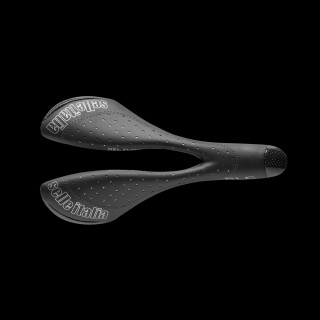
Index
- Materials Leather Leather saddles do not have a hard shell. Instead a moulded piece of thick leather is stretched, like a taut hammock, between the front and re
- Anatomy Injuries and Treatment Every day, podiatrists treat cyclists who have sustained overuse injuries by pushing themselves beyond their limitations. Here
- Saddle Shape Cutaway seat Certain models incorporate a channel centered down the length of the seat. Others use a hole toward the front of the nose. Seats with cha
- Protection Cycling pads When cycling pads provide optimal comfort and fit well then you will want to wear them. Yet the real aim of […] technological research is
- Suspension A saddle may contain suspension components, such as springs or elastomers between the rails and the shell, to help absorb vibrations transmitted by th
- History The history of the bicycle seat is tied to the development of the bicycle in terms of efficiency of movement and comfort for the rider. When the firs
- Accessories Cycling shorts are short, skin-tight legwear designed to improve comfort and efficiency while cycling. They reduce wind resistance, increasing aerody
- Saddle in Design Sella stool The Sella, a stool made from a bicycle seat and cast iron base, stemmed from Castiglioni's desire for a comfortable seat in a telephone ki
- Cycling Biomechanics Bike performance To optimise bike performance it's crucial to get your cycling biomechanics right. Cycling biomechanics refer to the forces that act o
- Bike/SADDLE Types In the 80's, mountain bikes were beginning to become popular. The reason is because they can ride on most things. They can ride easily on rough terrai
- History of Bikes Being the first human means of transport to make use of the two-wheeler principle, the draisine (or Laufmaschine, "running machine"), invented by the
- Environment Facts on the benefits of biking Air polution, global climate change, traffic congestion, economic dependance on fossil fuels are all reduced by biking
Leather
Leather saddles do not have a hard shell. Instead a moulded piece of thick leather is stretched, like a taut hammock, between the front and rear ends of the rails. […] Such a saddle is generally more comfortable after a break-in period during which it conforms to the shape of the rider.
Carbon fiber seat
Carbon fiber composite materials (CFRP's – or carbon fiber reinforced plastics). Recently, bicycles have been taking advantage of CFRP technology where reducing weight can mean the difference between winning and losing – even a tiny reduction can be a big deal when Olympic gold medals are at stake. […] However, for some cyclists, winning isn't everything. It's comfort that comes in at number one.
Gel
A common buzzword in saddle construction is "gel", which is often touted as a cure-all. The material known as "gel" is a particular type of closed-cell foam, in which the air bubbles are at higher than normal pressure.

Handmade and quality
Selle Italia was the first firm in the sector to obtain quality management certification according to ISO 9001 : 2000 standards. The attention to detail and the meticulous choice of materials are a guarantee of absolute reliability. Also, all the design and creation phase of our producs comply with the lastest safety standards, thus guaranteeing absolute reliability. One of the strong point of our saddles has always been the choice of carefully selected and worked "full gain" leathers. Leather requies skinful manual working and precisely for that reason it represents quality and style.Moreover, unlike synthetic materials, it offers the advantage of favouring breathability and limiting surface aderence. All the leathers used comply with the washington Convention (CITES).


Mileage
The 136 elite athletes competing in this year's Amgen Tour of California typically ride their bikes twice as many miles as the average person drives their car each year. Pro cyclists put between 20,000-25,000 training and racing miles into their legs per annum. That's a whole lot of time in the saddle so like athletes in any sport, it begins with training.
Training
Pro cyclists spend an average of two to six hours per day training.
Most of that time is spent riding (...)
The athletes receive a training schedule from their team or personal coach customized for the type of cyclist they are. (...)
Injuries and Treatment
Every day, podiatrists treat cyclists who have sustained overuse injuries by pushing themselves beyond their limitations. Here are some of the most common cycling injuries and their causes. As with all athletic injuries, pain that is persistent indicates a need to seek treatment from a sports medicine specialist familiar with cycling injuries.
Your seat must fit your type of riding and your body. The faster you ride, the more likely it is you'll want a narrow, racing-style seat. This is because, a fast-riding position on a bike shifts you forward placing more weight on the hands and feet and reducing a lot of the weight on the seat. Also, as you pedal more vigorously, you spin faster and you can't tolerate interference from the sides of the seat.(...)
Next, the seat must fit your particular anatomy.
You can sometimes see how you fit a seat if you sit on it for a while then get off and immediately look closely at the back of the seat top. If a saddle is right for your body, its rear will support your sit bones. These bones will form dents in certain types of seats. If the seat is correct for your anatomy, the depressions will be centered on the pads of the seat on either side.While the rear of the seat supports your sit bones, the front (nose) of the seat is designed to help you control the bike with your thighs and support some of the body weight.
Does Bicycling Cause Erectile Dysfunction and Impotence in Men?
Prolonged cycling on a poorly fitting bicycle saddle may lead to some sexual problems including erectile dysfunction (ED) and impotence in men, but most men feel pain and numbness long before permanent problems occur.
Impotency / prostate issues
There has recently been a great deal of hysteria on the subject of cycling-related impotency. The thrust of the argument is that the rider's weight flattens the penile arteries against the saddle, reducing blood-flow capacity of these articles, which are required for tumescence.(...)
These problems in most cases are related to poor adjustment or poor choice of saddles, such that the rider's weight is not being carried properly by the "sit bones." In particular, having the saddle too high or tilted down too far, will lead to the rider sitting on the narrow part of the saddle, which may block these arteries, and also possibly do nerve damage. This sort of mismatch can also create pressure on the prostate.(...)
For many cyclists, the best solution to saddle discomfort is a totally different style of bicycle, the "recumbent." A recumbent features the basic position of an easy chair, with the pedals out pretty much straight in front of the seat (not "saddle"). The seat has a back, like a chair, which is important, since the rider's weight is not pressing against the pedals. The seat back provides a purchase so that the rider can pedal forcefully without sliding backward.
Many people believe that the recumbent is the bicycle of the future, and they may well be right. Recumbents are significantly more comfortable than conventional "upright" bikes, and in some ways are safer.

Saddle’s nose
The problem with the nose of the bicycle seat is that it bothers many riders, both women and men. This is the part of the seat that's most likely to compress nerves, irritate genitalia, cause chafing and generally abuse the body. Fortunately, there are plenty of seat models currently available that address the issue with various innovations.
Women saddles
Most higher-performance bicylces come with saddles designed for men, not for women. Due to the wider hips of most women, this can result in the sit bones overhanging a narrow saddle, leading to painful pressure on soft tissues.
In general, women's saddles are somewhat wider and somewhat shorter than those that work best for men. While not all women require a female-specific saddle design, most do. Many women suffer displaced discomfort as a result of riding an inappropriate saddle: In many cases, the only way to reduce direct saddle pain is to tilt the saddle down in front. This may reduce the acute saddle pain, but creates a tendency to slide forward. This sliding must be resisted by pushing backward on the handlebars, which often results in sore hands, wrists, shoulders or neck!
Some newer women's saddles have a large cutout in the middle to eliminate pressure on soft tissues. These work well for many women, but some riders find the sharp-ish edges of the hole irritating.
Equally important, most manufacturers offer their popular seat models in both men's and women's versions and there are significant differences.
Because male and female pelvises differ (women's are wider), it's usually (though not always: women sometimes do fine on men's seats) a good idea for men to start with men's saddle models and women with women's. The former is a bit longer and narrower while the latter is a bit shorter and wider.
Cutaway seat
Certain models incorporate a channel centered down the length of the seat. Others use a hole toward the front of the nose. Seats with channels and holes are often called Cutaway seats.
Gel seat
Some seats feature soft foam or gel in the nose and soften the base of the seat beneath to reduce the stiffness. These are usually called Gel seats.
The important thing to know is that if you find the seat's nose a problem, there are models designed to remove the intrusion. Try a few until you find the model that works for you.
Cycling is a dynamic activity; your position on the bicycle saddle changes constantly as you take curves, climb or sit back and take in the view. In fact, movement is essential, since staying in the same position eventually reduces blood circulation to that area. Make sure your saddle design can handle the moving about in weight distribution and move with you.
If you look at a saddle from behind, you should see a relatively flat profile rather than a domed shape. The same is true when you view the saddle from the side. We have found that flat top and side-to-side profiles are best for both promoting movement and for supporting your sit bones during the various phases of a ride.
Saddles which have a hammock like shape will feel nice in the parking lot test, but will hold your posterior in a frozen position. As the ride progresses, the cradling reduces movement, and cuts off circulation. Another shape that is appearing in newer saddle designs is a back of the saddle scoop.
Cycling pads
When cycling pads provide optimal comfort and fit well then you will want to wear them. Yet the real aim of […] technological research is to achieve the correct balance between comfort and functionality. Comfort requires protection and resistance against impacts, assured by […] foams, forms and varied thickness of padding designed to perfectly fit anatomical shapes. The aim of functionality is to ensure […] pads guarantee breathabilty, moisture and body temperature management.
Recycled chamois
The first ever chamois to be made from recycled materials (in fact, plastic bottles), reflecting TMF's growing commitment to using innovative technologies that protect the environment and promote sustainable development.
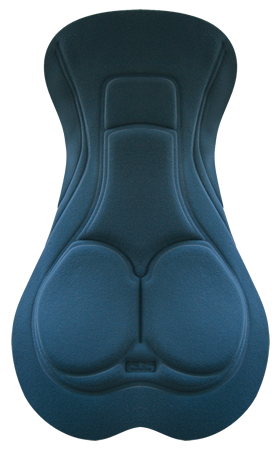
A saddle may contain suspension components, such as springs or elastomers between the rails and the shell, to help absorb vibrations transmitted by the frame and seatpost.
Suspension is built into the underside of the seat in various ways, often by adding elastomers (rubber bumpers) between the seat rails and the seat. Otherwise, the seat resembles a standard narrow racing seat with a sleek long top; light weight; high-tech look.
Elastomer
Shock Absorbers: the use of "elastomer's" between the shell and the rail to absorb and eliminate road shock and road vibrations patented by Selle Italia in 1984.
The history of the bicycle seat is tied to the development of the bicycle in terms of efficiency of movement and comfort for the rider. When the first bicycle, the draisine, appeared in 1818, the seat was simple and unsophisticated, hardly more than a wooden plank. The penny farthing bicycle, or the high-wheel bicycle with a small wheel in the back, must have had a terribly uncomfortable seat as the rider put all his weight on the seat and pedaled hard to move the bicycle forward with a primitive gear system. As bicycles became more sophisticated the manufacturers' primary concerns revolved around perfecting the gear system to move the bicycle forward more easily. Safety bicycles, so-called because the wheels were of the same size and the rider did not risk falling over the large wheel of the high wheeler, were extraordinarily popular for both men and women by 1890.
Refinements to the bicycle seat in the early twentieth century were minimal, including the addition of comfortable padding on the convex saddle. More recent refinements to the conventional saddle seat include making the seat cheaper to manufacture by having them made in Taiwan or China, and finding materials to produce a lightweight seat. Some conventional seats have been modified to respond to the concerns regarding reduced blood flow to the genitalia by adding gel to the seat. Only the radical re-designs, which often include two separate lobes for the buttocks and eliminate the horn in front, completely ignore conventional seat design.
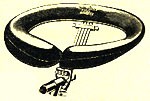
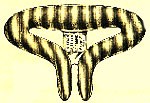



Cycling shorts are short, skin-tight legwear designed to improve comfort and efficiency while cycling.
- They reduce wind resistance, increasing aerodynamic efficiency.
- Protect the skin against the repetitive friction of the legs against the bicycle seat or frame.
- Provide support to the male anatomy analogously to a jock strap.
- Draw sweat away from the skin to prevent chafing and rashes, and to cool the rider down through the process of evaporation.
- Compress the legs, which can help combat muscular fatigue.
- Reduce the weight of a riders clothing.
Historically, cycling shorts were made of knit black wool, which hides oil and grease stains, with a chamois leather patch inside the shorts in the crotch area, which reduces chafing from the bicycle saddle. Modern cycling shorts are often made of spandex (Lycra) with a synthetic chamois lining and are produced in a variety of shapes and styles to suit the needs of different riders. For example, the patterns used for the chamois on women's cycling shorts tend to be quite different from those used for men's.
Cycling shorts are designed to be worn alone with no undergarments, or as an undergarment.
Sella stool
The Sella, a stool made from a bicycle seat and cast iron base, stemmed from Castiglioni's desire for a comfortable seat in a telephone kiosk where he liked "to move around" and "to sit, but not completely".

- designmuseum.org/exhibitions/online/a-century-of-chairs/1950s
- www.pagina.to.it/download/PAGINA_ARTE/OPERE/POP10.jpg
Review of the HÅG Capisco chair
A lot of people still refer to the Capisco as the saddle chair and this is due to the saddle seat pan fitted to some of the Capisco models. When Peter Opsvik designed the Capisco the concept of the seating position of a horse rider was very much in his mind.
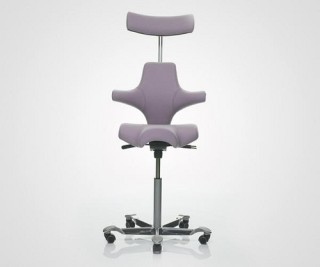
Bike performance
To optimise bike performance it's crucial to get your cycling biomechanics right. Cycling biomechanics refer to the forces that act on the human body and the effects these forces produce. This involves having the bike set up properly, and the rider correctly positioned. There are a number of key areas involved in cycling biomechanics: (...)
Saddle height.
There is an optimum saddle height, which has been calculated as between 105% and 107% of leg length - this requires the lowest oxygen consumption, and is thus the most efficient position, allowing you to ride for long periods. A saddle which is too high will cause you to 'rock' from side to side with each pedal stroke, while a saddle that is too low places extra stress on the knees. (...)
Saddle position.
There are two factors here – the fore-aft position, which refers to the location of the rear of the saddle behind a vertical line drawn to the centre of the crank axle, and the angle of the saddle nose – either pointing up, down, or neutral.
The ideal fore-aft saddle position allows for a plumb-line dropped from the patella to bisect the pedal axle when the crank is in the horizontal forward position. This allows the hip and knee muscles to be fully utilised, minimising strain on the knees.
Saddle angle.
Any people prefer the saddle tipped slightly upwards – they feel like they are falling off if it slopes forward at all – but research has shown that an uptilted saddle can cause back pain, as it forces the pelvis and low back to oppose each other when you lean forwards on the bike.
Shoe – pedal interface.
The ideal position is with the ball of the foot directly over the pedal – this helps to decrease stress to the knee, and is the most efficient cycling position (...)
In the 80's, mountain bikes were beginning to become popular. The reason is because they can ride on most things. They can ride easily on rough terrain including dirt roads, mountains, etc. But they can also ride on street roads and other smooth surfaces. Plus, they can ride on them pretty fast.
Mountain saddle
Fairly narrow shape; medium padding to soften blows; lightweight; shaped rear section to ease moving rearward; downward sloped nose for moving forward further; sometimes reinforced on the areas that touch down when you crash. A few models designed for aggressive off-road riding, feature extra length for even more fore/aft body position adjustments when jamming.

Road saddle
Lightweight (sometimes have titanium or hollow seat rails); minimal padding; narrow shape; pretty stiff top.

BMX saddle
If you don't like to ride on streets and sidewalks, but love to have bike races on dirt roads, do lots of tricks, and try some stunts, then a BMX bike is the perfect bike for you. A BMX bike looks similar to a motorcycle, but BMX bikes are made for racing, stunts and tricks; therefore, they do not have as many parts and they are very light.

Tri Bike
Tri bikes also handle well but in a different way. Tri bikes are made to go fast while utilizing rider energy efficiently and even conserving energy to some extent (remember – the bike is only 1/3 of the race). In order to accomplish this, tri bike geometry has a steeper seat tube angle, usually 76-78 degrees. The head tube angle is usually a little less aggressive, the top tube is slightly shorter, and often the front end slopes. The chain stay is also often one centimeter or so shorter. This geometry allows the rider's hips to remain open while riding in the aero position.

Recumbent
Many people do not enjoy riding a traditional bicycle because...They are to overweight to bend down over the handle bars and still pedal...Their neck and back ache from being hunched over...Their hands, arms, and wrists get tired from supporting their weight on a conventional bike...Their bottom aches after a long ride...Their private parts get numb when they ride...They want to enjoy the view a little more!If you're not riding for any of the reasons listed above, then "recumbent", or "bent", cycling may be just for you!Recumbent bicycles allow the rider to be seated in an up-right position with a greater view of the surroundings and the road ahead. Because the rider is lower to the ground, handling the bike on corners, and stopping are easier. Saddle soreness is eliminated because the seat is like a chair.

Being the first human means of transport to make use of the two-wheeler principle, the draisine (or Laufmaschine, "running machine"), invented by the German Baron Karl von Drais, is regarded as the forerunner of the modern bicycle. It was introduced by Drais to the public in Mannheim in summer 1817 and in Paris in 1818.Its rider sat astride a wooden frame supported by two in-line wheels and pushed the vehicle along with his/her feet while steering the front wheel. (...)
Further innovations increased comfort and ushered in a second bicycle craze, the 1890s' Golden Age of Bicycles. In 1888, Scotsman John Boyd Dunlop introduced the first practical pneumatic tire, which soon became universal. Soon after, the rear freewheel was developed, enabling the rider to coast. This refinement led to the 1898 invention of coaster brakes. By the turn of the century, cycling clubs flourished on both sides of the Atlantic, and touring and racing became widely popular.
Bicycles and horse buggies were the two mainstays of private transportation just prior to the automobile, and the grading of smooth roads in the late 19th century was stimulated by the widespread advertising, production, and use of these devices.(...)


Facts on the benefits of biking
Air polution, global climate change, traffic congestion, economic dependance on fossil fuels are all reduced by biking instead of driving. Bicycling as transportation is even recommended by the Union of Concerned Scientists as a personal way to help stop global climate change. Californians avoid producing seven tons of smog-forming gases per day by getting on bikes.
Politically, the World Environment Day was in San Francisco in 2005 as covered by the Tube Times. At the summit, the mayor commited San Francisco to reducing the city's greenhouse gas emissions 25% by 2030; let's do it by biking!
City bikes in Copenhagen
The city bikes are Copenhagen! This is emphasized by the fact, that a city bike was the official gift from The City of Copenhagen to the American president, when he visited Copenhagen in 1997. Bill Clinton recieved a specially designed city bike called "City Bike One". (...)
To encourage even more citizens to use their bicycle for transportation.
The City of Copenhagen systematically expands the net of bicycle lanes and routes. Hence, you can get faster around in City by bicycle than by car or bus!
New York city bike lanes
The city's Department of Transportation has installed 200 miles of bike lane in the past three years – during which time there has been a 45 percent increase in commuter cycling – and is on track to meet its goal of 1,800 miles by 2030.
The Big Apple has three classes of bike lane based on road width, traffic volumes, types of vehicle using the street and safety features. Lanes are sometimes put on the left of the road to reduce the likelihood of cyclists being 'doored'.

- www.bikeradar.com/news/article/video-new-york-city-bike-lanes-explained-23737
- hambonedesigns.com/images-global/car-vs-bike.jpg
Ecodesign
Ecodesign is an approach to design of a product with special consideration for the environmental impacts of the product during its whole lifecycle. In a life cycle assessment the life cycle of a product is usually divided into procurement, manufacture, use and disposal.




































































































